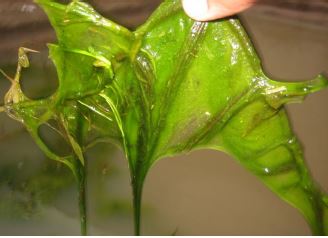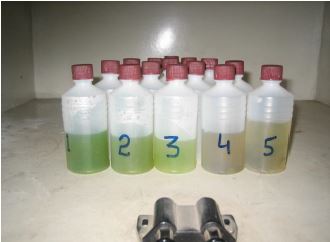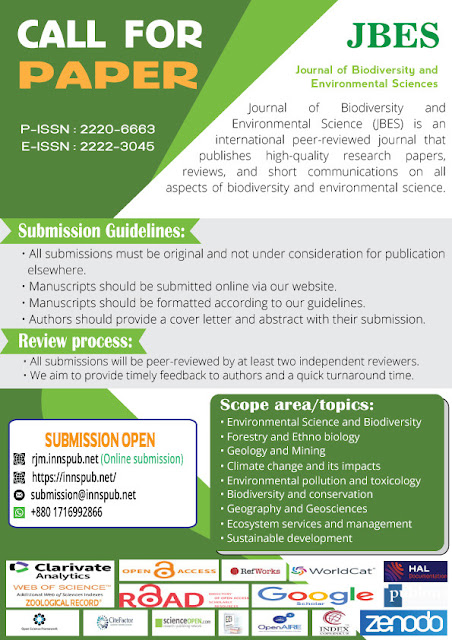Maize plays a central
role in the food security and livelihoods of Kenyan populations. It serves as a
staple food crop for a significant portion of the population, contributing to
both dietary needs and income generation. Moreover, maize is an essential
component of livestock feed, supporting the growth of the domestic livestock
industry. In sub-Saharan Africa as a whole, maize is ranked third in importance
among cereal crops, following rice and wheat (Shiferaw et al., 2011). The
cultivation and trade of maize have a considerable impact on regional economies
and food systems. Maize (Zea mays) is often contaminated by Aspergillus fungal
species during pre- and post-harvest practices, storage, and transportation.
Studies by Horn (2007) showed that Aspergillus species are commonly found in
the soil, which acts as a source of primary inoculum for infecting developing
maize kernels during the growing season. Aspergillus flavus is distributed
globally with a high frequency of occurrence in warm climates which favor the
growth of the fungus (Cotty et al., 1994).
Understanding the
population structure and genetic diversity of A. flavus is crucial for
diversification of effective management strategies. Different strains of A.
flavus may have varying levels of aflatoxin production and pathogenicity, which
can influence the severity of contamination in maize (Abbas et al., 2013).
Additionally, certain strains may exhibit resistance or susceptibility to
control measures, such as biological control agents or fungicides. Therefore,
identifying specific strains or groups within the A. flavus population can aid
in the selection of appropriate control strategies to minimize aflatoxin
contamination. Moreover, the genetic diversity of A. flavus may also have
implications for host-pathogen interactions and disease development. Different
strains may exhibit variations in their ability to infect maize kernels,
colonize host tissues, and compete with other microorganisms in the maize
ecosystem (Atehnkeng et al., 2014). Understanding these interactions can help
in the development of resistant maize varieties and cultural practices that can
limit fungal growth and subsequent aflatoxin production. The population
structure and genetic diversity of A. flavus strains isolated from maize play a
significant role in aflatoxin contamination and disease development. The
existence of multiple strains within the A. flavus population highlights the
need for comprehensive investigations to characterize their phenotypic and
genotypic traits. Such studies will provide insights into the factors
influencing aflatoxin production, the design of effective control strategies,
and the development of resistant maize varieties to minimize the health and
economic risks associated with aflatoxin contamination. Aspergillus species,
including Aspergillus flavus, are of great concern due to their ability to
produce aflatoxins, potent carcinogens and toxins that contaminate various
agricultural commodities, including maize. The accurate identification and
characterization of Aspergillus species is crucial for assessing their
potential to produce aflatoxins and understanding their impact on food safety.
Gene sequencing has
emerged as a powerful tool for the accurate identification and classification
of Aspergillus species. In recent years, numerous studies have utilized gene
sequencing data to characterize Aspergillus biovars from different sources. By
comparing the genetic sequences of specific genes, such as the internal
transcribed spacer (ITS) region, researchers can determine the species and
genetic diversity within a population. In addition to genetic characterization,
a polyphasic approach is commonly employed to identify and characterize Aspergillus
biovars. This approach combines morphological and molecular analyses to provide
a comprehensive understanding of the biovars. Morphological characteristics,
such as colony color, texture, spore color, size and structure, conidiophore
structure and vesicle shape are observed and recorded. These
characteristics help in differentiating between various Aspergillus species and
subgroups. Furthermore, molecular techniques, including polymerase chain
reaction (PCR) amplification and sequencing of specific genetic markers, allow
for a more precise identification of aflatoxigenic and nonaflatoxigenic A.
flavus biovars. These methods target genes associated with aflatoxin
production, such as the aflatoxin biosynthesis cluster genes, to determine the
potential of a biovar to produce aflatoxins. The combination of gene sequencing
and polyphasic approaches provides a comprehensive understanding of the genetic
diversity, population structure, and aflatoxinproducing potential of
Aspergillus species, particularly A. flavus. This information is essential for
risk assessment, development of effective control strategies, and ensuring the
safety and quality of imported maize and other agricultural commodities.
This study contributed
to the understanding of the population dynamics and potential risks associated
with A. flavus in imported maize. Given the prominence of maize in Kenya,
research efforts focusing on this crop are crucial. The genotypic and phenotypic characterization of A. flavus on imported maize assumes particular
significance in the Kenyan context. A thorough understanding of the genetic
diversity and potential for mycotoxin production in A. flavus populations is
essential for developing effective control strategies and mitigating the health
risks associated with mycotoxin contamination. Gazetted and un-gazetted points
of entry play a crucial role in facilitating the importation of maize. However,
the risk of A. flavus contamination in imported maize has not been thoroughly
investigated, warranting a comprehensive genotypic and phenotypic
characterization of this fungus. Understanding the genotypic and phenotypic
characteristics of A. flavus on imported maize is essential for several
reasons. Firstly, it allows for the identification of specific genetic traits
and phenotypic features associated with higher aflatoxin production, thus
enabling the development of targeted control strategies. Secondly, it provides
insights into the diversity of A. flavus biovars present in imported maize and
their potential for aflatoxin contamination. This knowledge can contribute to
risk assessment and management strategies aimed at preventing or minimizing
aflatoxin contamination in the domestic maize supply chain.
Genotypic
characterization involves studying the genetic makeup of A. flavus biovars to
determine their relatedness, genetic diversity, and potential for toxin
production. Several molecular techniques have been used for genotyping A.
flavus, including random amplified polymorphic DNA (RAPD), amplified fragment
length polymorphism (AFLP), and multilocus sequence typing (MLST) (Abdallah et
al., 2018). These methods have provided valuable insights into the genetic
diversity and population structure of A. flavus, highlighting the presence of
distinct genotypes in different geographic regions (Klich et al., 2015).
Phenotypic characterization involves studying the observable traits and
behaviors of A. flavus, such as growth patterns, conidiation, and mycotoxin
production. Phenotypic characterization is essential for understanding the
pathogenicity and virulence of A. flavus strains on imported maize. Researchers
have observed variations in colony morphology, growth rate, and sporulation
among different A. flavus biovars (Calvo et al., 2016). Furthermore, studies
have demonstrated the production of mycotoxins, particularly aflatoxins, by
certain A. flavus strains (Chang et al., 2019). Phenotypic characterization
provides valuable information for risk assessment and identifying high-risk A.
flavus biovars in imported maize. The genotypic and phenotypic characterization
of A. flavus on imported maize plays a crucial role in assessing the potential
health risks associated with mycotoxin contamination. By combining genotypic
and phenotypic data, researchers can identify highly toxigenic A. flavus
strains and evaluate their prevalence in imported maize.
This information is
essential for implementing targeted control measures, such as crop management
strategies, post-harvest interventions, and storage practices, to minimize
mycotoxin contamination and ensure food safety (Li et al., 2020). Investigating
A. flavus on imported maize specifically at gazetted and ungazetted points of
entry in Kenya is crucial. Gazetted points of entry are official border
checkpoints designated for the importation of agricultural products, while
un-gazetted points of entry refer to informal channels through which goods,
including maize, are smuggled into the country. Analyzing both types of entry
points can provide a comprehensive understanding of the risks associated with
A. flavus contamination in imported maize, as well as the efficacy of control
measures implemented at official checkpoints. In this study, we aim to conduct
a detailed genotypic and phenotypic characterization of A. flavus on imported
maize at both gazetted and un-gazetted points of entry in Kenya. We will
analyze the genetic diversity, aflatoxin production capability, and other
phenotypic traits of A. flavus biovars obtained from imported maize samples. By
doing so, we hope to gain insights into the potential sources and pathways of
A. flavus contamination in imported maize and develop targeted strategies to
ensure the safety and quality of imported maize in Kenya.
Reference
Abbas HK, Accinelli C,
Zablotowicz RM, Abel CA, Bruns HA. 2013. Prevalence of aflatoxin and
fumonisin in corn (maize) and peanut cake from hens laying contaminated eggs
destined for human consumption in Pakistan. Food Additives & Contaminants:
Part A, 30(1), 169-180. DOI:10.1080/19440049.2012.748706
Abdallah MF, Girgis GN,
Khedr AHA, Ali EF, Abdul-Raouf UM. 2018. Genotypic diversity and
antifungal susceptibility of Aspergillus flavus isolated from maize grains in
Egypt. Journal of Genetic Engineering and Biotechnology, 16.
Amaike S, Keller
NP. 2011. Aspergillus flavus. Annual Review of
Phytopathology 49, 107-133.
Atehnkeng J, Donner M,
Ojiambo PS, Ikotun T, Sikora RA, Cotty PJ, Bandyopadhyay R. 2014.
Biological control agents for managing aflatoxin contamination in groundnut: A
review. Agriculture 4(3), 197-217. DOI: 10.3390/agriculture4030197
Atehnkeng J, Ojiambo PS,
Ikotun T, Sikora RA, Cotty PJ, Bandyopadhyay R. 2014. Evaluation of
atoxigenic isolates of Aspergillus flavus as potential biocontrol
agents for aflatoxin in maize. Food Additives & Contaminants: Part
A, 31(2), 378-387.
Bensch K, Groenewald
JZ, Dijksterhuis J, Starink-Willemse M, Andersen B, Summerell BA, Shin HD,
Dugan FM. 2018. Species and ecological diversity within
the Cladosporium cladosporioides complex (Davidiellaceae,
Capnodiales). Studies in Mycology 89, 177-301.
Brown DW. 2005.
Phylogenetic Analysis of Zipper-Positive Abdominal
Aflatoxin-Producing Aspergillus Species. Mycologia 97(2), 498-504.
Brown DW. 2010.
Phylogenetic Analysis and Mycotoxin Production Capability
of Aspergillus Section Flavi from Brazil Nuts. Mycologia 102(4),
866-872.
Chen ZY, Brown RL,
Rajasekaran K, Damann KE, Cleveland TE. 2008. Evaluation of thermotolerant
strains of Aspergillus flavus for aflatoxin contamination and genetic
variation. Journal of Food Protection 71(9), 1909-1914.
Diba K, Kordbacheh P,
Mirhendi SH, Rezaie S, Mahmoudi M. 2007. Identification
of Aspergillus species using morphological characteristics. Pakistan
Journal of Medical Sciences 23(6), 867.
Diniz LE, Sakiyama NS,
Lashermes P, Caixeta ET, Oliveira ACB, Zambolim EM, Zambolim L. 2005. Analysis
of AFLP markers associated to the Mex-1 resistance
locus in Icatu progenies. Crop Breeding And Applied Technology, 5(4), 387.
Johnson LJ. 2015.
Genetic Diversity and Population Structure of Aspergillus
flavus Isolates from Maize Fields in Three Geographic Regions of the
United States. Journal of Agricultural and Food Chemistry 63(41),
9016-9023.
Jones JP. 2012.
Molecular identification of aflatoxigenic and
non-aflatoxigenic Aspergillus species from maize (Zea mays L.).
Mycotoxin Research 28(2), 89-96.
Kilonzo RM, Imungi JK,
Muiru WM, Lamuka PO, Kuria EN. 2017. Genetic diversity and aflatoxin
contamination of maize from eastern Kenya regions. Journal of Applied
Biosciences 114, 11342-11351.
Kilonzo-Nthenge A,
Monda E, Okoth S, Makori D. 2019. Aflatoxins and their fate in maize and
maize-based products in Kenya: A review. Food Control 96, 219-225.
Kilonzo-Nthenge A,
Monda E, Okoth S, Makori D. 2019. Aflatoxins and their fate in maize and
maize-based products in Kenya: A review. Food Control 96, 219-225.
Lee T. 2019.
Genetic Diversity and Population Structure of Aspergillus
flavus Isolates from Maize in Thailand. Frontiers in Microbiology 10,
1997.
Liang Y, Yu J, Zhou
T. 2015. Improving Aflatoxin B1 Production on Rice by Aspergillus
flavus and Aspergillus parasiticus through Recombination of
Cytochrome P450 Enzymes. Scientific Reports 5, 1–10. https://doi.org/10.1038/srep08260
Miller JD. 2016.
Structure and Population Diversity of Aspergillus flavus from Maize
in Thailand. Toxins 8(12), 368.
Odhiambo BO, Kilonzo
RM, Njage PM, Okoth S. 2020. Aflatoxin contamination in maize: Current
challenges and potential opportunities for mitigation in Sub-Saharan Africa.
Toxins 12(10), 630.
Ojiambo PS, Ikotun T,
Leke W, Sikora R, Mukalazi J. 2016. Variation in the pathogenic and
genetic diversity among isolates of Aspergillus flavus link to
aflatoxin contamination of peanut and maize in Kenya.
Probst C, Schulthess F,
Cotty PJ. 2010. Impact of Aspergillus section Flavi community
structure on the development of lethal levels of aflatoxins in Kenyan maize
(Zea mays). Journal of Applied Microbiology 108(2), 600-610. DOI:
10.1111/j.1365-2672.2009.04432.x
Raju MVLN, Seetharami
Reddi TV, Krishna TG. 2014. Development of a PCR-based method for
detection and differentiation of Aspergillus
flavus and Aspergillus parasiticus. Indian Journal of
Microbiology 54(2), 202-206.
Samson RA, Houbraken J,
Thrane U, Frisvad JC, Andersen B. 2019. Food and indoor fungi. Westerdijk
Fungal Biodiversity Institute.
Samson RA, Houbraken J,
Thrane U, Frisvad JC, Andersen B. 2014. Food and Indoor Fungi. CBS-KNAW
Fungal Biodiversity Centre.
Sobolev VS, Neff SA,
Gloer JB, Abbas HK. 2009. Characterization of novel volatile
antimicrobials from the molds Aspergillus flavus, Aspergillus
parasticus, and Aspergillus ochraceus. Toxins 1(1), 3-12. DOI:
10.3390/toxins1010003
White TJ. 1990.
Amplification and Direct Sequencing of Fungal Ribosomal RNA Genes for
Phylogenetics. In PCR Protocols: A Guide to Methods and Applications (pp.
315-322). Academic Press.
Xu J, Chen AJ, Zhang
Y. 2016. Molecular approaches for rapid identification and diversity
assessment of foodborne spoilage yeasts: A review. Journal of Food
Science 81(1), M15-M22.
Yu J. 2016.
Regulation of Aflatoxin Biosynthesis: Perspectives from Genomics Research.
Methods in Molecular Biology 1398, 267-285.
Yu J, Chang PK, Cary
JW, Wright M, Bhatnagar D, Cleveland TE, Payne GA. 2012. Comparative
mapping of aflatoxin pathway gene clusters in Aspergillus
parasiticus and Aspergillus flavus. Applied and Environmental
Microbiology, 78(23), 7856-7866. DOI: 10.1128/AEM.01959-12
Yu J, Chang PK, Ehrlich
KC, Cary JW, Bhatnagar D, Cleveland TE, Payne GA. 2004. Clustered pathway
genes in aflatoxin biosynthesis. Applied and Environmental
Microbiology 70(3), 1253-1262.
Yu J, Chang P-K,
Ehrlich KC, Cary JW, Montalbano B, Dyer JM, Bhatnagar D, Cleveland TE, Payne
GA. 2011. Clustered pathway genes in aflatoxin biosynthesis. Applied and
Environmental Microbiology 77(24), 8479-8484. https://doi.org/10.1128/AEM.06367-11
Yu J, Payne GA, Nierman
WC, Machida M, Bennett JW, Campbell BC. 2013. Aspergillus flavus genomics:
Gateway to human and animal health, food safety, and crop resistance to
diseases. In Advances in Applied Microbiology 84, 1-91
Source : Molecular characterisation of Aspergillus flavus on imported maize through gazetted andungazetted points of Entries in Kenya













%20Adult%20tree,%20(B)%20Base%20of%20trunk%20and%20section%20of%20bark,%20(C)%20Leaves%20and.JPG)


..JPG)









%20in%20full.JPG)

